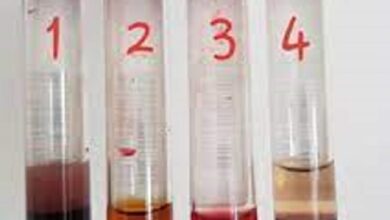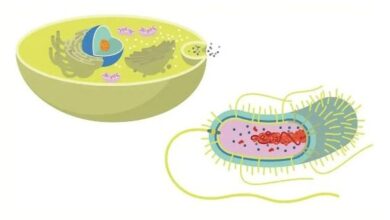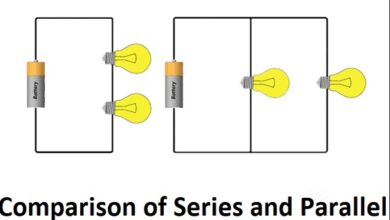Difference between gingivitis and periodontitis Similarities and FAQs
Gingivitis and Periodontitis
In this article we will provide you the difference between gingivitis and periodontitis Similarities and FAQs.
What does gingivitis mean?
Gingivitis is an inflammation of the gums that is characterized by the presence of bleeding, pain and redness . It occurs as a result of the accumulation of bacterial plaque along the edges of the teeth, due to poor brushing and lack of oral hygiene. If not treated properly, it can develop into a more serious periodontitis that will eventually lead to tooth loss. For this reason, it is important to visit the dentist regularly to prevent or detect any early signs and to start the appropriate treatment before the condition worsens.
What does periodontitis mean?
Periodontitis is an inflammatory disease that mainly affects the periodontal tissue, which supports and joins the teeth with the jaw . It is caused by bacteria present in dental plaque that multiply as a result of poor oral hygiene. If it does not receive adequate treatment, these bacteria invade the soft and bone tissues of the periodontium, generating progressive destruction of its components until the disintegration of the ligament that joins the tooth to its alveolus (bone). periodontitis _it can be chronic or acute; the first being much more frequent and also more severe. In advanced stages there is a risk of losing teeth due to the irreversible destruction of the bone around them. It is important to perform regular dental check-ups to detect it early and avoid major complications.
Enhance your reading: Difference between lotion and cream Similarities and FAQs
Similarities Between Gingivitis and Periodontitis
Gingivitis and periodontitis share many similarities . Both are chronic inflammatory oral diseases, characterized by an abnormal immune response to oral factors such as plaque and tartar. This causes inflammation of the gums (gingiva) around the teeth, resulting in pain and swelling. If not treated properly, both can lead to the destruction of periodontal connective tissue and the development of deep pockets between the teeth and gums. The main difference between these two diseases is their severity: while gingivitis usually does not cause permanent damage if treated early, periodontitis progresses more rapidly to the point where irreversible damage appears.
Differences between gingivitis and periodontitis
Gingivitis and periodontitis are diseases that affect the gums . Gingivitis is a mild inflammation of the gums caused by the accumulation of dental plaque due to inadequate brushing or improper use of dental floss. This disease can be easily treated with good oral hygiene habits, including regular brushing and flossing. On the other hand, periodontitis is a much more serious disease that involves the destruction of underlying tissues, such as ligaments and bone. This condition requires professional treatment to be properly controlled; however, if not diagnosed and treated early, it can lead to permanent tooth loss.
Frequent questions abour gingivitis and periodontitis
What is gingivitis and how is it cured?
Gingivitis is an inflammation of the gums caused by the accumulation of bacterial plaque. This can lead to redness, swelling, and bleeding when brushing your teeth. The best way to cure gingivitis is through a strict oral care program that includes brushing twice daily with a soft toothbrush, flossing daily, and visiting your dentist to deep clean and remove built-up plaque.
What to do to remove gingivitis?
To get rid of gingivitis, it is important to practice good daily oral hygiene. This includes brushing your teeth twice a day with a soft-bristled toothbrush and flossing to clean between your teeth. It is also advisable to visit your dentist regularly for professional cleanings. Additionally, there are several topical anti-inflammatory medications that can help reduce redness and inflammation caused by gingivitis.
What causes gingivitis?
Gingivitis is an inflammation of the gums caused by the accumulation of bacterial plaque and tartar around the gum line. This occurs when food debris is not properly removed during brushing or flossing, allowing bacterial buildup and growth in the periodontal tissues.
What is the best medicine for gingivitis?
The best treatment for gingivitis depends on its cause and severity. Commonly prescribed medications include oral antibiotics, topical anti-inflammatories, chlorhexidine or hydrogen peroxide mouthwashes, special toothpastes, and local administration of corticosteroids. Systemic antimicrobial drugs may also be prescribed to control chronic inflammation. Consult a qualified medical professional to obtain the right treatment for you.
How is periodontitis removed?
To treat periodontitis, your dentist may recommend a deep cleaning to remove plaque and tartar buildup on your teeth. This is known as dental prophylaxis. In some cases, oral or topical medications may also be Chinese . In addition, it was used to reduce inflammation and infection. If there is no improvement with these conservative measures, then the dentist may suggest a surgical procedure called curettage which involves removing damaged or infected tissue from the bottom of the periodontal pockets and then suturing the pockets closed.
What causes periodontitis?
Periodontitis is a chronic inflammatory gum disease that occurs when tartar and plaque build up on the teeth, causing destruction of the connective and bone tissue around the teeth. This can lead to serious problems such as deep cavities, tooth movement, and eventually tooth loss.
What are the symptoms of periodontitis?
Symptoms of periodontitis include swollen and painful gums, bleeding when brushing and chewing, halitosis, gum receding into the neck of the tooth, bone loss around the tooth, and tooth movement.
How to remove periodontitis at home?
Periodontitis cannot be treated at home. It is a serious dental condition that requires treatment by a qualified professional, such as a dentist or dental hygienist. The goal of treatment is to reduce inflammation and control risk factors to prevent future recurrences. Treatment may include deep cleanings, medications, periodontal surgery, and lifestyle changes (for example, improving oral hygiene).




